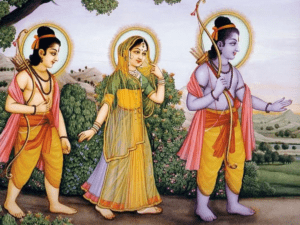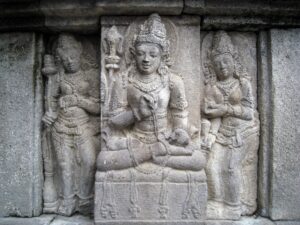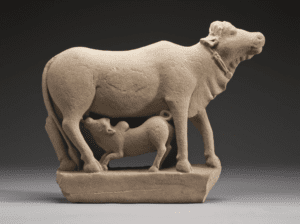Meenakshi Temple, Madurai
The Meenakshi Amman Temple in Madurai, Tamil Nadu, is one of India’s most significant and revered temples. Dedicated to Goddess Meenakshi (a form of Parvati) and Lord Sundareswarar (a form of Shiva), this temple stands as an architectural masterpiece, a center of religious devotion, and a symbol of Tamil cultural heritage. The temple’s origins, construction, and scientific achievements make it an unparalleled marvel in Indian history.
Historical Roots and Evolution

Ancient Origins and Mythic Beginnings
According to local legend, the goddess Meenakshi (whose name means “the fish-eyed one”) was born with three breasts. The extra breast was prophesied to disappear when she met her destined consort, Lord Sundareswarar (a form of Shiva). Once this divine meeting occurred, her third breast vanished, symbolizing the union of cosmic feminine and masculine energies. The temple is said to have been established on a site that was already considered sacred in ancient Tamil lore. Its roots are interwoven with the region’s rich mythological narratives and early devotional literature.
Historical Developments
- Early Beginnings: Historical references suggest that the site has been revered since at least the 6th century CE, with mentions in early Tamil Sangam literature. Over centuries, various kings and dynasties have patronized the temple, adding layers to its structure and spiritual significance.
- Pandya Contributions: The early Pandya kings of Madurai were instrumental in establishing the temple as a major religious and cultural hub. Their contributions laid the groundwork for the expansive complex that we see today.
- Reconstruction and the Nayaka Dynasty: In the 14th century, parts of the temple were damaged due to invasions. However, it was during the 16th and 17th centuries under the Nayaka rulers—especially under King Tirumalai Nayaka—that the temple experienced a grand reconstruction. This era of renovation infused the complex with the ornate Dravidian style it is celebrated for today.

Architectural Splendor
- Gopurams (Gateway Towers): The temple’s most striking features are its towering gopurams, intricately adorned with thousands of sculptures depicting deities, mythical creatures, and scenes from ancient epics. These monumental gateways serve both as spiritual thresholds and as expressions of artistic virtuosity.
- Mandapams and Halls: Among its many halls, the Thousand Pillar Hall stands out as an engineering marvel. Each pillar is carved with exceptional detail, and intriguingly, several are designed to produce distinct musical notes when struck—a subtle interplay of art and acoustics.
- Symmetry and Spiritual Geometry: The layout of the temple complex adheres to ancient principles of Vastu Shastra (the traditional Indian system of architecture) and Agama Shastra (scriptures that guide temple construction and rituals). This cosmic design is meant to reflect the order of the universe, aligning physical space with spiritual ideals.
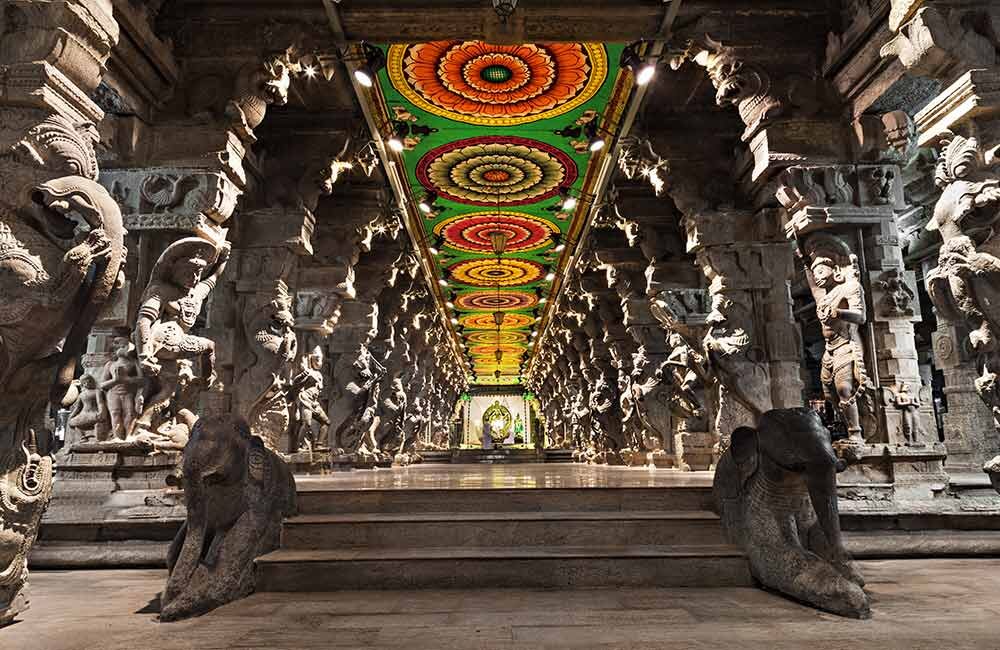
Materials and Techniques
Constructed primarily of granite and other durable stones, the temple’s enduring strength is a testament to the advanced craftsmanship of its builders. The material choice not only ensures longevity but also contributes to the temple’s cool interior ambiance, even under the harsh sun. The walls, pillars, and gopurams are canvases for elaborate carvings that tell stories from Hindu mythology, history, and everyday life in ancient Madurai. This open-air museum of stone art continues to inspire awe and scholarship.
Scientific and Engineering Marvels
- Musical Pillars: One of the most fascinating features is the acoustic design of the temple’s halls. In the Thousand Pillar Hall, certain pillars emit musical tones when tapped, demonstrating an empirical understanding of sound frequencies and material properties—a harmonious blend of art and early science.
- Natural Cooling and Ventilation: The temple’s design incorporates principles of natural air circulation. High ceilings, strategically placed windows, and open courtyards ensure that cool breezes circulate throughout the complex, providing respite from the tropical heat.
- Water Management Systems: The temple complex includes sacred tanks—such as the Golden Lotus Tank—that are ingeniously designed to collect, store, and manage water. These water bodies not only serve ritualistic purposes but also reflect sophisticated ancient techniques in water conservation and hydraulics.
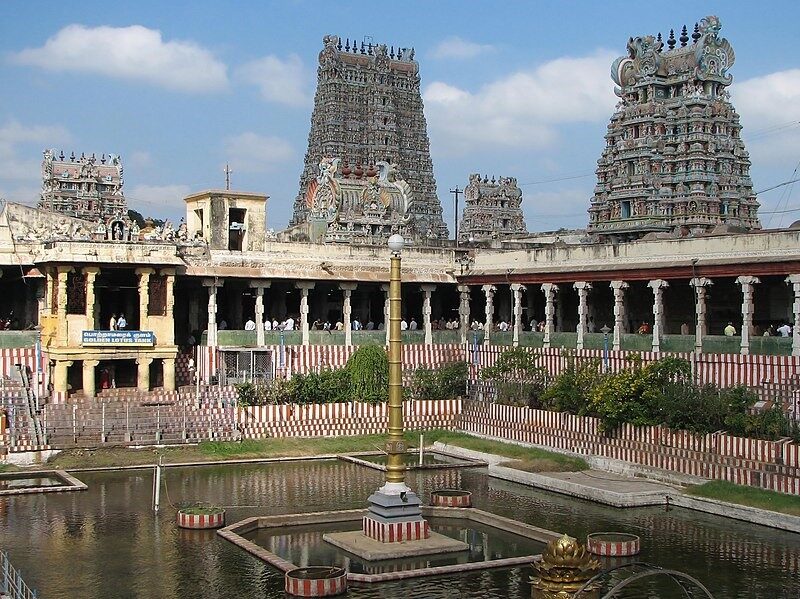
Cultural and Religious Significance
- Pilgrimage and Worship: For centuries, the Meenakshi Temple has been a major pilgrimage site. Devotees from across India—and increasingly from around the world—visit to seek blessings, participate in rituals, and immerse themselves in its spiritual ambiance.
- The Chithirai Festival: One of the temple’s most celebrated events is the annual Chithirai Festival. This grand celebration, which marks the celestial wedding of Meenakshi and Sundareswarar, attracts millions of visitors. The festival is a vibrant showcase of traditional music, dance, and elaborate processions, reinforcing the temple’s role as a cultural epicenter.
- Cultural Legacy: Beyond its religious importance, the temple has long been a patron of the arts. It has inspired generations of poets, musicians, dancers, and visual artists, becoming a repository of Tamil culture and heritage.
- Integration of Traditions: While primarily a temple dedicated to the divine union of Meenakshi and Sundareswarar (a Shaivite pairing), the complex also houses shrines to other deities, reflecting a rich tapestry of Hindu traditions and an ethos of inclusivity and syncretism.
Symbolism and the Cosmic Vision
- Cosmic Blueprint: Every aspect of the temple’s design—from its towering gopurams to its intricate floor layouts—is imbued with symbolism. The complex is envisioned as a microcosm of the universe, where each element plays a role in reflecting cosmic order and divine harmony.
- Journey of the Soul: Visitors moving through the temple’s various sanctums are taken on a symbolic journey. The passage through multiple levels and halls represents the soul’s progression towards enlightenment, mirroring the spiritual journey outlined in ancient texts.
- Divine Love and Transformation: The story of Meenakshi and Sundareswarar is central to the temple’s allure. Their divine romance symbolizes the unity of opposites, a recurring theme in Hindu philosophy where balance and transformation are key to understanding life’s mysteries.
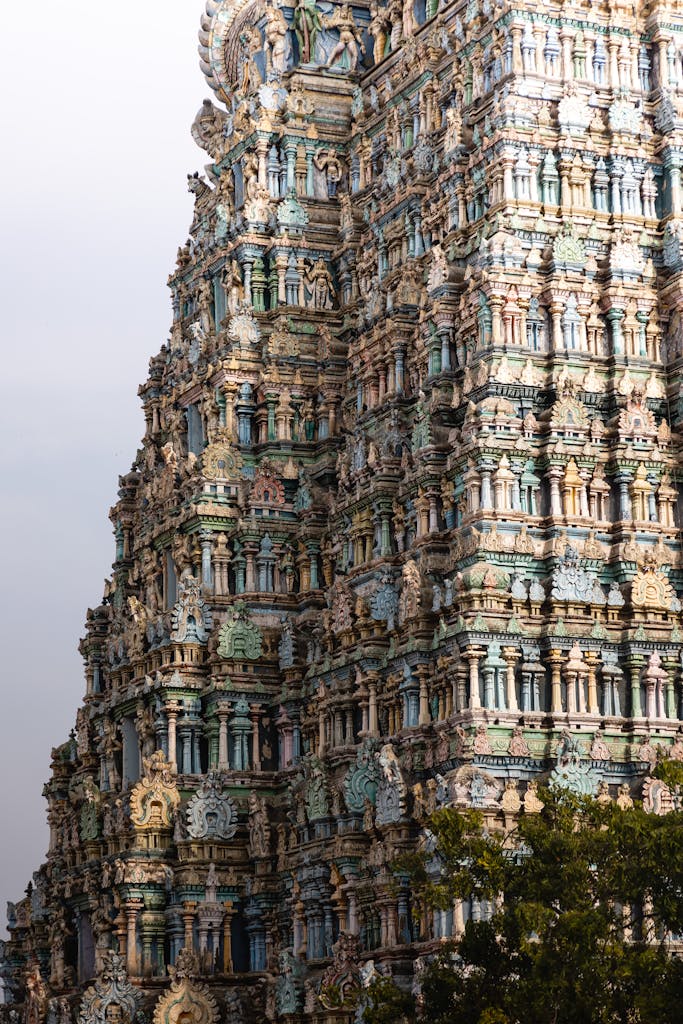

Contemporary Relevance
The Meenakshi Temple of Madurai is much more than an architectural wonder; it is a dynamic, living institution that encapsulates the history, spirituality, and artistic brilliance of South India. Its towering gopurams, musical pillars, and intricate carvings are not merely remnants of a bygone era but vibrant expressions of an enduring cultural identity. For anyone stepping into its vast courtyards, the temple offers an immersive experience—a journey through the annals of history, the marvels of ancient science, and the profound mysteries of divine love. Whether you are a devout pilgrim or a curious traveler, the Meenakshi Temple promises an encounter that is as intellectually enriching as it is emotionally stirring.
- Cultural Continuity: Today, the Meenakshi Temple continues to be meticulously maintained by both governmental agencies and dedicated trusts. It stands as a beacon of continuity, bridging ancient traditions with modern sensibilities.
- Tourism and Education: The temple is not only a place of worship but also an educational resource. It attracts historians, architects, and tourists alike, all keen to learn about its rich past and innovative design.
- Community and Economy: The temple has historically been the heart of Madurai’s civic life. It plays a pivotal role in community gatherings, local festivals, and the regional economy, offering a space where tradition and modernity coexist.
- Artistic Inspiration: Contemporary artists and cultural practitioners draw inspiration from its timeless beauty, ensuring that the legacy of the Meenakshi Temple continues to evolve with each generation.
Travel Guide
The Meenakshi Temple is open to visitors throughout the year, but the best time to visit is between October and March when the weather is pleasant. The temple is open daily from early morning to late evening, except during specific ritual hours. Key things to do when visiting:
- Witness the elaborate daily rituals and processions.
- Explore the stunning architectural features and sculptures.
- Attend a cultural or religious festival for a deeper experience.
- Visit nearby attractions such as Thirumalai Nayak Palace and Gandhi Memorial Museum.
- Shop for traditional handicrafts and taste the local delicacies of Madurai, particularly the famous Jigarthanda drink.
The Meenakshi Temple in Madurai is an embodiment of artistic brilliance, scientific ingenuity, and spiritual grandeur. It stands as a testament to the expertise of ancient Indian builders and the enduring faith of devotees. As both a cultural landmark and a spiritual sanctuary, this temple continues to inspire awe and reverence, making it one of the greatest architectural and religious marvels in the world.


